Rollei 35 feeling on the
Sony A7 (2015)
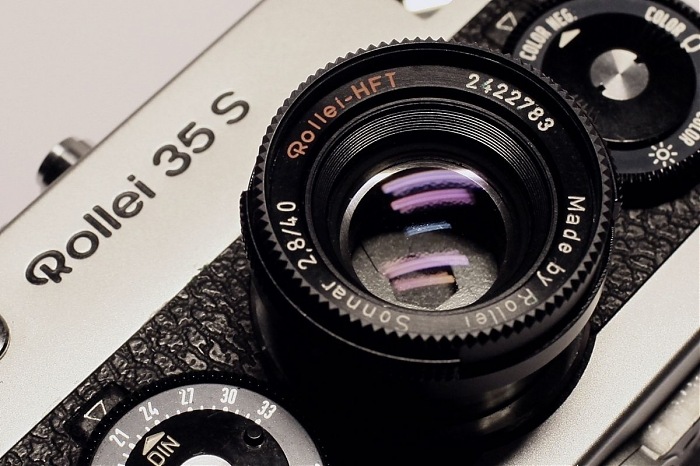
Similar to 'perceived temperature' there is something like the
perceived “best lens”, even if the lines per
millimeter test chart says otherwise. One of these lenses is the
Rollei 35 S
Sonnar 2,8/40. The Rollei 35 gave me some of the nicest picture I ever
made and
I always found the Sonnar performance faultless, sharp, contrasty,
simply the
best. Also if compared to lenses of other prime compact cameras like
the
Olympus XA or the Minox 35, the Sonnar was always ranked #1.
Now,
times have passed over the Rollei 35 and its siblings, even though I
still use it every now and then. Whenever I do however, it is for
the joy of using
a classic camera, and not for its compactness. And to tell
the truth, it also is not for the quality of the Sonnar, because what even a good 24x36
slide can
deliver, is easily surpassed by a multitude of even smaller digital
compacts
of today, Sonnar or not.
With
regard to compactness, the digital competitors have made
exceptional
progress anyways, to an extent I had thought impossible, even way after
the beginning
of the digital era. Especially the Sony cameras with their large
24x36mm sensor
are so small today – who (apart from Sony) would have imagined these cameras
five years ago?
One
factor that is spoiling the party a little is the size of the
lenses. I don’t want to bash Sony, but the perceived size of
their lenses is big, compared to the cameras (even if they are
very compact, if compared to similar lenses). Adapting compact lenses
of other
mount standards (like the Pentax M 2,8/40 or 2,8/28) is very easy and
yields
very usable combinations, thanks to the phantastic focusing aids of the
Sony,
yet not especially compact ones. For combinations as compact as the
smallest
current Sony lens, the Sonnar FE 2,8/35 (37mm long, 120g), you need to
look for
Leica M mount lenses.
If
you want something even smaller, the only option of buying one off
the shelf is the new Voigtlaender (Cosina) VM 2,8/40 Heliar, 32,2mm
long
including the adapter (22,4mm if collapsed), yet 250g heavy.
So
what would you get with a Rollei Sonnar 2,8/40 adapted to the Sony
A7?
Unsurpassed
compactness plus Sonnar quality and some Rollei 35 feeling
on the A7?
Let’s see.
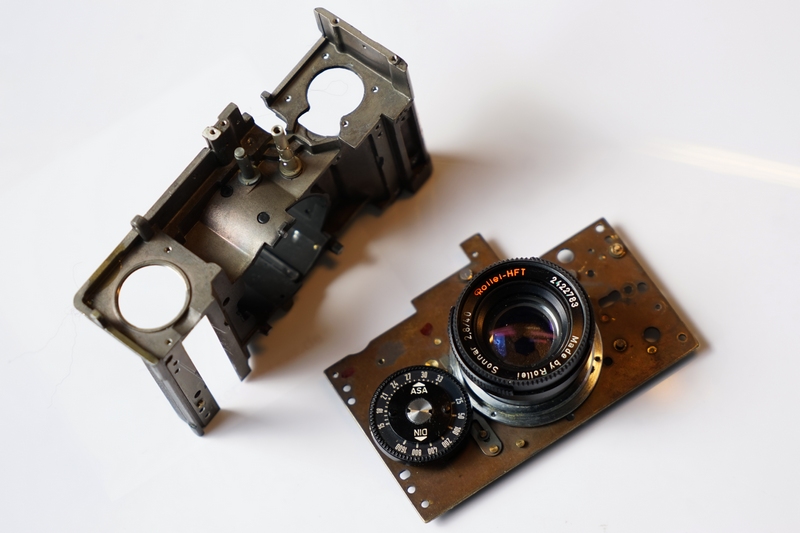
My
old 35 S, defect meanwhile and wearing dents on almost every corner
was the donor camera, which I dismantled to almost the very last screw.
Rollei lists about 24mm as register to the film plane, which leaves 6mm
for the
adapter – enough space. Transplanting the aperture actuation
and the lens
barrel lock mechanism was more difficult.
Here is what was left after taking the camera apart:
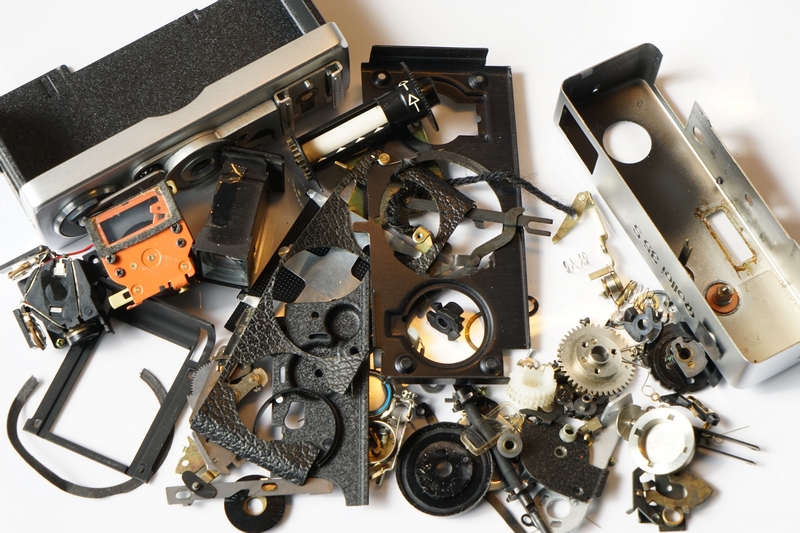
Since
I still have neither lathe nor milling equipment (only my
bare hands…) the adapter thickness is only as accurate as
can be achieved with
file, sand paper and caliper, but I am still happy with the result. The
optical
performance does not differ between the corners, so I believe I did a
good job
with the file. And correct infinity setting can easily be achieved, since the
stop is
adjustable –
as if it was made for me.
The
complete external shutter mechanism was removed, and the internal
shutter actuation mechanism blocked in open position with a drop of
glue.
The
body sided rails that guide the lens when pushed into the body were
impossible to mount inside the adapter, so pulling out or collapsing
the lens
needs to be a gentle movement. This is a tight fit anyways -
the lens can be
pulled out and collapsed when mounted on the camera, but can only be
removed
from the camera in operating position.
I
have given an extra thought to whether or not I could add a true
aperture ring from another lens and connect it to the tiny aperture
lever of
the Sonnar, but I found the original Rollei wheel more attractive, even
if it
affects the ergonomics of the camera, in that it partially covers the
grip.
This
in turn sparked the idea to keep some other design elements of the
35 S, like the lens lock button and the section of the shutter speed
wheel.
It
would have been possible to keep (almost) the complete front side of
the Rollei and mount one camera in front of the other, so to speak, but
this I
found somewhat silly, with only aperture wheel and lens lock having any
function.
Then
again, I did want to keep the classic “Rollei 35”
lettering.
So
now, the design is neither fish nor fowl, and I don’t really
like it
either. Design is a difficult subject…
This
is how the lens looked during the build:
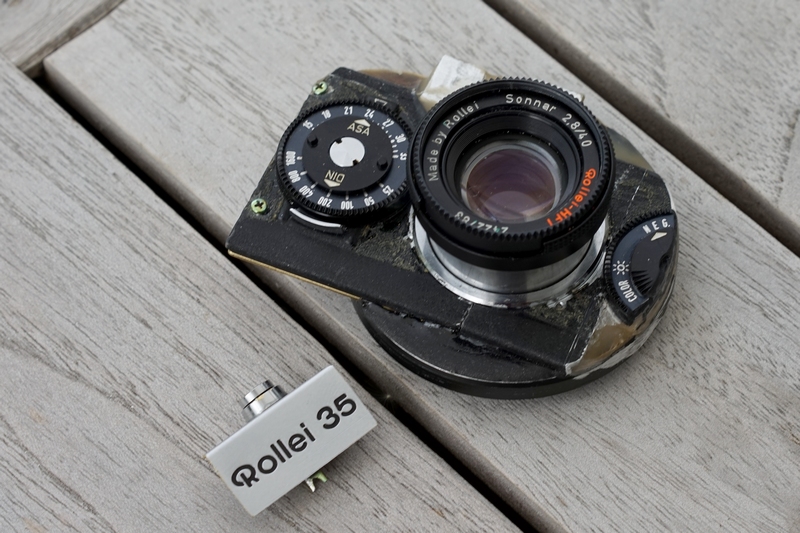
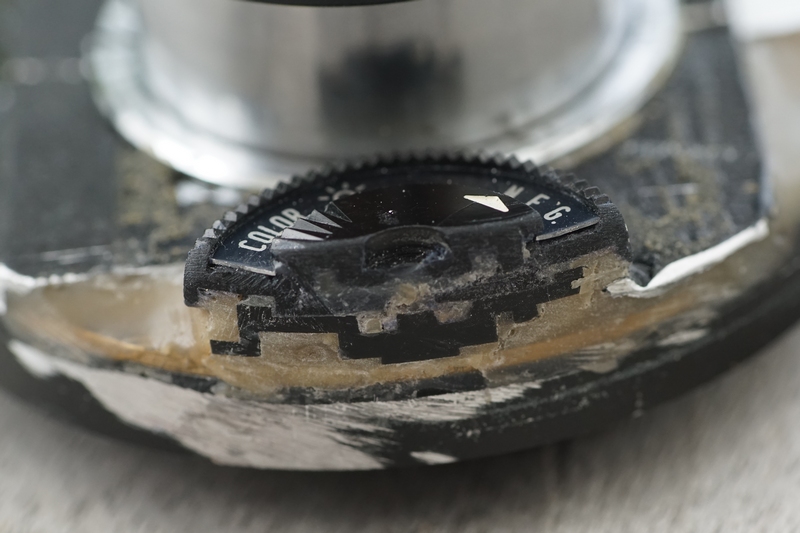
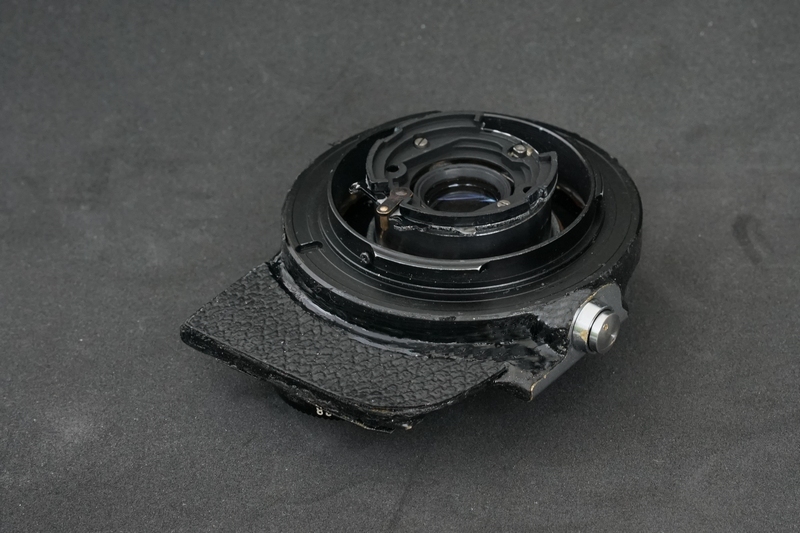
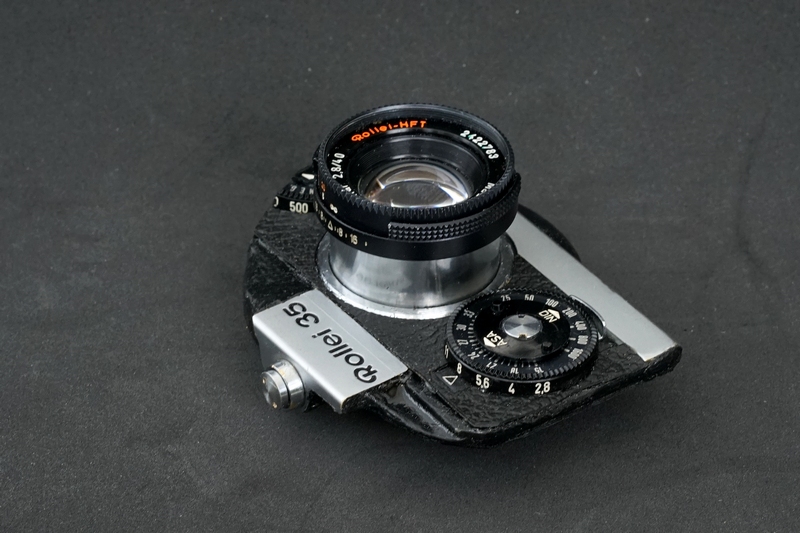
And
attached to the camera:
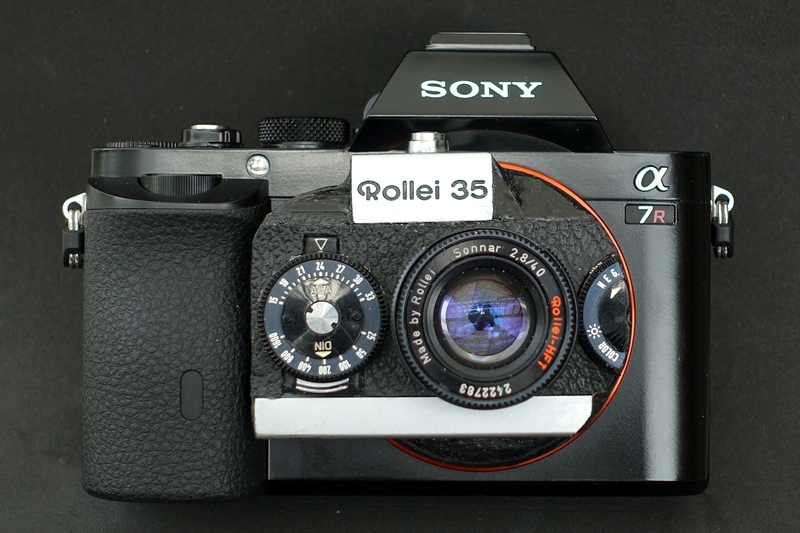
My scales show 130g of weight and a length of 31,1mm (19,6mm if collapsed!), so my adaptation is almost as light as the Sony Sonnar and flatter even as the Voigtlaender Heliar!
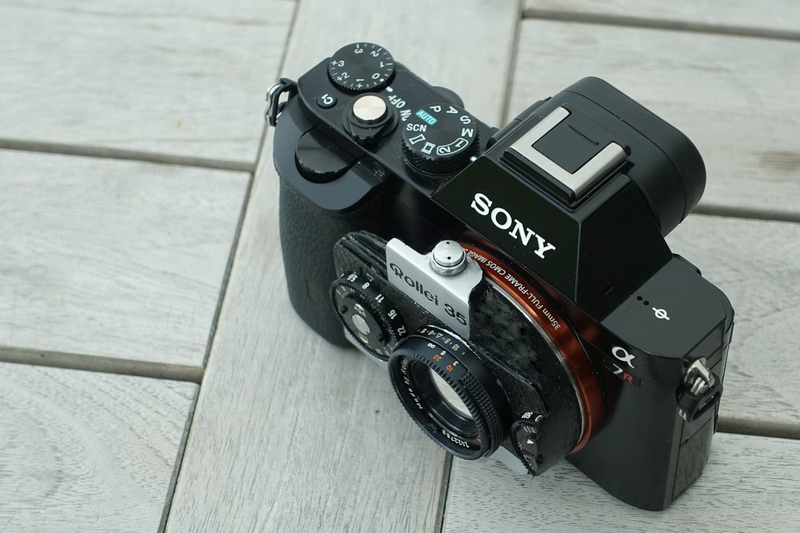
As for the feeling, well… The distance ring is not as easy to turn as I would like it to be, and one of my fingers inevitably blocks the lens while turning, but I can manage. Aperture selection is a joy and even if I will not always have this lens on the camera, there is no reason to not have it with me, as light and as small as it is.
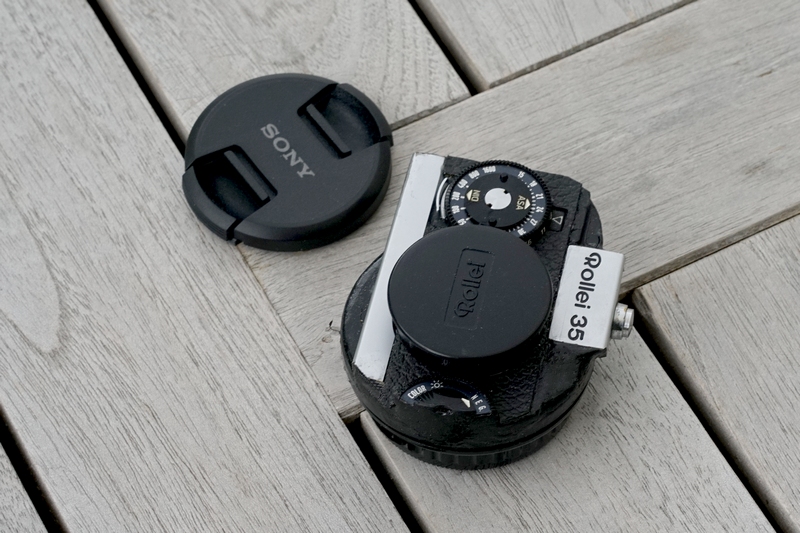
And
as small as it is, the optical performance is not too bad either.
The utmost corners are not good at full aperture, they are surprisingly
bad,
actually. Can it be that Rollei accepted this weakness, knowing that
the
corners would almost never be visible on a projected slide or printed
picture,
in analogue times?
All
other parts of the image are acceptable.
For
comparison, here is the Sony/Zeiss Sonnar FE 1,8/55, one of the
sharpest lenses on the planet and the old
SMC-Pentax M 2,8/28, at f=8 in the center, with the 40mm Sonnar being
an equal
partner.
Not so in the corners and borders of the frames, and also not at f=2,8, but I am not going to show this ;-)
Rollei Sonnar 2,8/40 at f=8,
center of the frame:
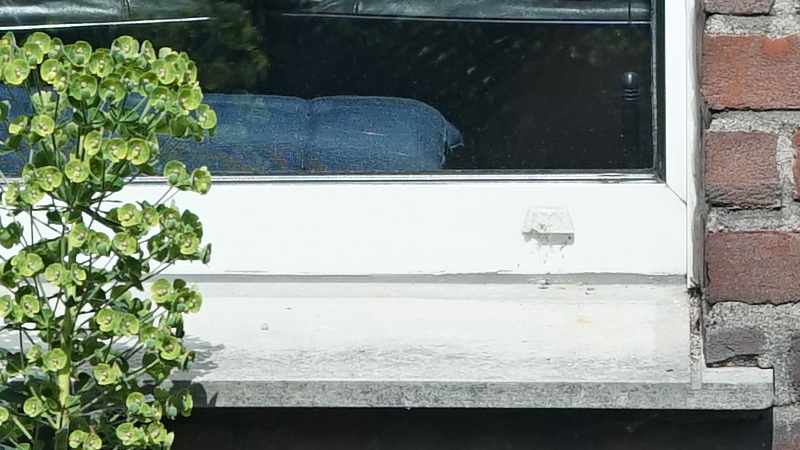
Sony/Zeiss Sonnar FE 1,8/55 at f=8, center of the frame:
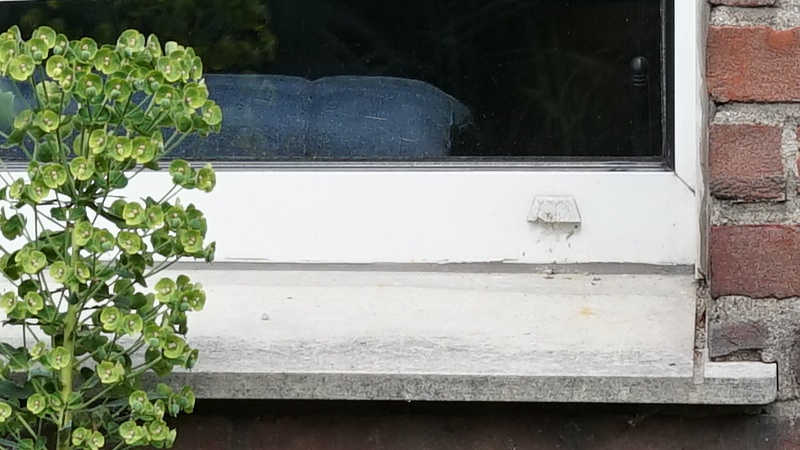
SMC-Pentax
M 2,8/28 at f=8, center of the frame:
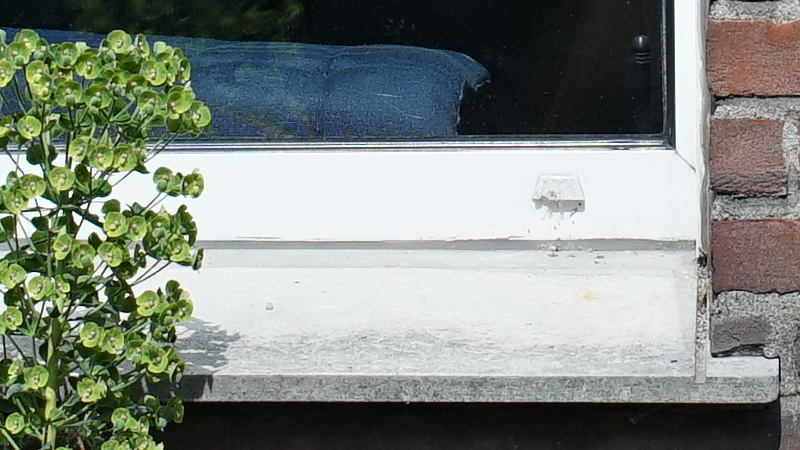
So
the golden rule continues to be to use f=8 and enjoy other people
looking at your camera with interest.
More of such adaptations (and on a much higher
level of skill) are done
by Mr.
Miyazaki in Japan
–
even smaller lenses
can be found there.
